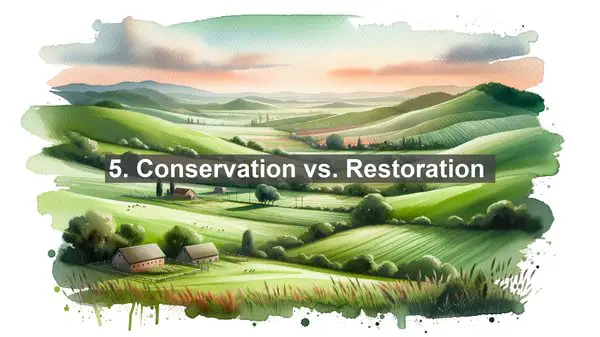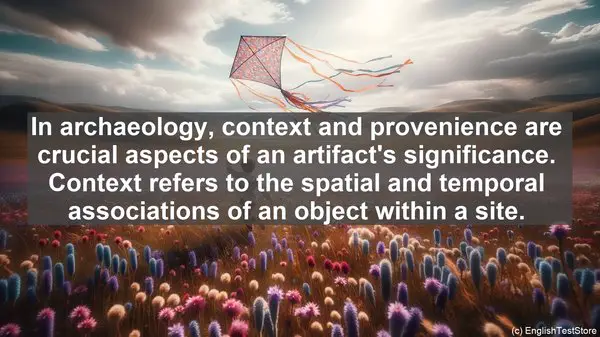Introduction: The Importance of Language in Conservation Archaeology
Welcome to this educational lesson on the top 10 commonly confused words in conservation archaeology. As you delve into the world of preserving our past, it’s crucial to understand the precise meanings of various terms. Let’s get started!
1. Artifact vs. Ecofact
Often used interchangeably, ‘artifact’ and ‘ecofact’ have distinct definitions. An artifact is any object made or modified by humans, such as tools or pottery. On the other hand, an ecofact refers to organic remains, like seeds or bones, that provide insights into ancient environments. Remember, artifacts are human-made, while ecofacts are natural remnants.
2. Site vs. Feature
When discussing archaeological sites, ‘site’ and ‘feature’ are frequently mentioned. A site refers to a location where past human activity occurred, such as a village or a burial ground. Features, on the other hand, are non-portable elements within a site, like hearths or walls. Think of features as the ‘building blocks’ of a site.
3. Stratigraphy vs. Chronology
Understanding the order and timing of events is crucial in archaeology. Stratigraphy deals with the layers of soil or sediment, each representing a different time period. On the other hand, chronology focuses on the absolute or relative dating of artifacts and features. While stratigraphy helps establish the context, chronology provides the timeline.

4. Excavation vs. Survey
Both excavation and survey are essential fieldwork methods. Excavation involves carefully digging and documenting artifacts, features, and stratigraphy. It’s like ‘unearthing’ the past. In contrast, survey is a broader assessment of an area, often through surface collection or geophysical techniques. It’s like ‘mapping’ the archaeological landscape.
5. Conservation vs. Restoration
Conservation and restoration are two approaches to preserving cultural heritage. Conservation aims to stabilize and protect artifacts or sites, often through preventive measures like climate control. Restoration, on the other hand, involves actively repairing or reconstructing damaged elements. Conservation focuses on preservation, while restoration emphasizes returning something to its original state.
6. Context vs. Provenience
In archaeology, context and provenience are crucial aspects of an artifact’s significance. Context refers to the spatial and temporal associations of an object within a site. Provenience, on the other hand, is the precise three-dimensional location where an artifact was found. While context provides the ‘story,’ provenience offers the ‘address.’
7. Lithics vs. Ceramics
Lithics and ceramics are two broad categories of artifacts. Lithics include objects made from stone, like tools or projectile points. Ceramics, on the other hand, are objects made from clay, like pottery. Both lithics and ceramics provide valuable insights into ancient technologies, but they require different analytical approaches.
8. Midden vs. Quarry
Midden and quarry are terms often encountered in archaeological landscapes. A midden refers to a deposit of domestic waste, providing a wealth of information about past diets and activities. A quarry, on the other hand, is a site where raw materials, like stone or clay, were extracted. Both middens and quarries are ‘windows’ into the past.
9. Typology vs. Taxonomy
Typology and taxonomy are classification systems used in archaeology. Typology involves grouping artifacts based on shared characteristics, often for dating or cultural attribution. Taxonomy, on the other hand, is the scientific classification of organisms. While both systems involve categorization, typology is specific to artifacts.

10. Taphonomy vs. Ethnography
Taphonomy and ethnography are two distinct research approaches. Taphonomy focuses on the processes that affect organic remains, from decay to burial. Ethnography, on the other hand, involves studying living cultures. While taphonomy provides insights into preservation, ethnography offers a comparative lens to understand past societies.
